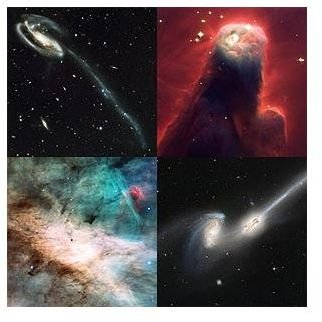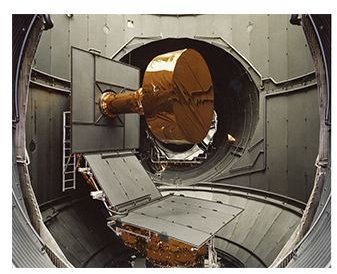Uses of Computers in Space Research and Advancement
Computer Uses
Early astronomers studied space from the limited view of their telescopes. Now, astronomical data from around the world is overflowing, thanks to the powerful tool called the computer.
The possible uses of a computer for space research are limited only by your imagination. Space simulations, data visualization, rover or robot manipulation, complex calculations and signal transmissions are some of the many ways that a computer aids astronomy.
Data Analysis and Documentation
Data analysis and documentation is perhaps the most apparent use of computers for space research. With piles of research data, astronomers need a way to store and share information conveniently.
Computers facilitate faster flow of information by providing collaborative workspaces. Experts from around the world can now  participate in real-time and get the latest space research updates and data.
participate in real-time and get the latest space research updates and data.
In 1992, the Information Systems Branch of Kennedy Space Center developed a special computer software, based on the Windows Visual News Reader or Win Vn application, that helped organize loads of technical space information and allowed various space groups to exchange ideas.
Today, space research in various forms—abstracts, articles, news, rss feeds and multimedia streams—are available internationally and can be accessed with any computing device.
Space Surveillance
Space surveillance is another successful space project that utilizes computers in monitoring objects orbiting Earth. The tedious task of tracking, detecting, identifying and cataloging objects orbiting Earth, such as satellites, rockets and orbital debris, can only be accomplished with the use of computers.
The United States Space Surveillance Network (SSN) in Cheyenne Mountain Air Station houses powerful computers, radar sensors and tracking devices to provide a steady flow of information from surveillance satellites and space control centers. CelesTrak, an authorized distributor of SSN’s space data offers free software for space experts and hobbyists alike, who would like to use their own computers for tracking the latest objects detected orbiting Earth.
Space Photography
In the early 1900s, Germans started aerial photography by using rockets fitted with cameras. Today, high quality images of Earth, planets, asteroids, moons, stars, galaxies and even unknown matter in the universe are available through the use of large-scale

telescopes, and of course, computers.
In 1990, the famous Hubble Space Telescope was launched by NASA. The gigantic telescope beamed thousands of vivid images of the cosmos back to Earth and continues to do so. Every week, the Hubble Telescope transfers 120 gigabytes of data, which are stored in powerful computer datacenters of NASA.
The James Webb Space Telescope (JWST), Hubble’s successor, is scheduled for launch in 2014, and is designed to complement advanced computer systems to further unveil the secrets of the universe.
Space Simulations
Computers extend the possibilities of space exploration by allowing scientists to perform space simulations. From these simulations,

extreme environments and complex flight situations are modeled. Detailed observations are recorded and tons of data are analyzed for further space research and development.
Currently, the European Test Services, a branch of the European Space Agency located in Netherlands, maintains the Large Space Simulator (LSS)—as its name suggests, it is the biggest space simulator in the world. The LSS simulates sun fluxes, temperature and pressure conditions that helps in preparing and building space equipments.
Space enthusiasts can also study and experience space flights using software like Orbiter, a free Windows PC application that offers realistic space flight simulations.